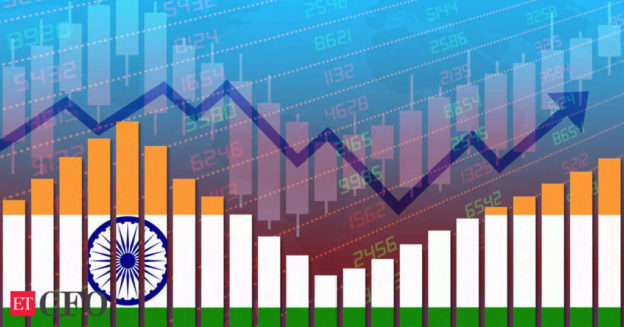India has reached a unique spot in the world now and data of forein investments and market indexes shows it. Despite pandemic India fetched a total of $27.37 bn FDI in 2021-22 which was 62% higher than the last years, $16.92. Also India’s dynamic Nifty Fifty crossed MSCI world index by 3% last year.
Considering the major changes happening world over and the developments that are happening in India, it may take 3-4 years more to reach $5 trillion from the targeted 2024-25 due to the Covid pandemic setback. However, the country is set to overtake France next year and then Britain in 2023 to regain its place as the world’s sixth-biggest economy.
World Economy
The world’s economic output will exceed $100 trillion for the first time next year and it will take China a little longer than previously thought to overtake the United States as the No.1 economy, according to a British consultancy firm.
This brings the India goal of reaching $5 trillion economy size from about $3 trillion in focus. British consultancy CEBR (Centre for business and economic research) predicted China will become the world’s top economy in dollar terms in 2030, two years later than forecast in last year’s World Economic League Table report.
India looks set to overtake France next year and then Britain in 2023 to regain its place as the world’s sixth-biggest economy, CEBR said.
“The important issue for the 2020s is how the world economies cope with inflation, which has now reached 6.8% in the U.S.,” CEBR said.
“We hope that a relatively modest adjustment to the tiller will bring the non-transitory elements under control. If not, then the world will need to brace itself for a recession in 2023 or 2024.”
The report showed Germany was on track to overtake Japan in terms of economic output in 2033. Russia could become a Top 10 economy by 2036 and Indonesia looks on track for ninth place in 2034.
The $5 trillion goal
It is highly unlikely that India will become a $5 trillion economy by 2024-25 due to the slowdown caused by the Covid pandemic.
While Covid-19 is certainly the most important factor for economic slowdown, what is notable is that India’s decline is much steeper than what other developing countries and the global economy witnessed over the last year.
As of now, the current Indian GDP is less than $3 trillion. If this has to jump to $5 trillion in four years, the economy has to grow higher than 13 per cent per annum, on average.
In 2019, Prime Minister Narendra Modi envisioned making India a $5 trillion economy and global powerhouse by 2024-25.
Even if everything goes according to current growth projections by the RBI and IMF, the Indian economy will be smaller for a considerable period of next year than it was in 2019.
According to an EY India estimate, the goal of becoming a $5 trillion economy by 2024-25 is likely to be set back by about 3-4 years in an ‘optimistic or business-as-usual’ scenario, and may have to wait till 2029-30 in a worst-case outcome, as per an EY India estimate.
However, India is poised to overtake China in terms of the annual pace of economic expansion and become the global growth leader for the next five years, starting from 2021-22, as per the latest projections of the International Monetary Fund (IMF). EY India’s macro-fiscal unit, tax and economic policy group used the IMF projections to arrive at their estimates.
The IMF has projected a 9.5% GDP growth for India this fiscal, followed by an 8.5% growth next year.
“In the pessimistic scenario, the real GDP growth is reduced by 1 percentage point starting 2022-23 as compared to the benchmark solution. Other parameters namely implicit price deflator-based inflation and exchange rate depreciation are kept at the same levels as in the benchmark solution. In this case, the crossover point shifts one year forward to 2029-30,” EY said.
“In the optimistic scenario, real GDP growth is increased by 1 percentage point beginning 2022-23 as compared to the benchmark solution. In this case, India reaches the $5 trillion mark by 2027-28,” it said.





